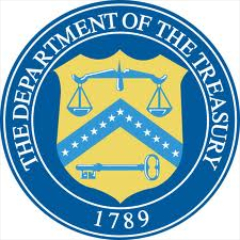 WASHINGTON — The Internal Revenue Service is urging taxpayers whose tax-filing extension runs out on Oct. 15 to double check their returns for often-overlooked tax benefits and then file their returns electronically using IRS e-file or the Free File system.
WASHINGTON — The Internal Revenue Service is urging taxpayers whose tax-filing extension runs out on Oct. 15 to double check their returns for often-overlooked tax benefits and then file their returns electronically using IRS e-file or the Free File system.
More than a quarter of the nearly 13 million taxpayers who requested an automatic six-month extension this year have yet to file. Though Oct. 15 is the last day for most people, some still have more time, including members of the military and others serving in Afghanistan or other combat zone localities who typically have until at least 180 days after they leave the combat zone to both file returns and pay any taxes due.
Check Out Tax Benefits
Before filing, the IRS encourages taxpayers to take a moment to see if they qualify for these and other often-overlooked credits and deductions:
· Benefits for low-and moderate-income workers and families, especially the Earned Income Tax Credit. The special EITC Assistant can help taxpayers see if they’re eligible.
· Savers credit, claimed on Form 8880, for low-and moderate-income workers who contributed to a retirement plan, such as an IRA or 401(k).
· American Opportunity Tax Credit, claimed on Form 8863, and other education tax benefits for parents and college students.
· Same-sex couples, legally married in jurisdictions that recognize their marriages, are now treated as married, regardless of where they live. This means that they generally must file their returns using either the married filing jointly or married filing separately filing status. Further details are on IRS.gov.
E-file Now: It’s Fast, Easy and Often Free
The IRS urges taxpayers to choose the speed and convenience of electronic filing. IRS e-file is fast, accurate and secure, making it an ideal option for those rushing to meet the Oct. 15 deadline. The tax agency verifies receipt of an e-filed return, and people who file electronically make fewer mistakes too.
Everyone can use Free File, either the brand-name software, offered by the tax agency’s commercial partners to individuals and families with incomes of $58,000 or less, or online fillable forms, the electronic version of IRS paper forms available to taxpayers at all income levels.
Taxpayers who purchase their own software can also choose e-file, and most paid tax preparers are now required to file their clients’ returns electronically.
Anyone expecting a refund can get it sooner by choosing direct deposit. Taxpayers can choose to have their refunds deposited into as many as three accounts. See Form 8888 for details.
Of the more than 143 million returns received by the IRS so far this year, 85 percent or nearly 122 million have been e-filed.
Quick and Easy Payment Options
The new IRS Direct Pay system now offers taxpayers the fastest and easiest way to pay what they owe. Available through the Pay Your Tax Bill icon on IRS.gov, this free online system allows individuals to securely pay their tax bills or make quarterly estimated tax payments directly from checking or savings accounts without any fees or pre-registration. More than 1.1 million tax payments totaling over $2.6 billion have been received from individual taxpayers since Direct Pay debuted earlier this year.
Other e-pay options include the Electronic Federal Tax Payment System (EFTPS) electronic funds withdrawal and credit or debit card. Those who choose to pay by check or money order should make the payment out to the “United States Treasury.”
Taxpayers with extensions should file their returns by Oct. 15, even if they can’t pay the full amount due. Doing so will avoid the late-filing penalty, normally 5 percent per month, that would otherwise apply to any unpaid balance after Oct. 15. However, interest, currently at the rate of 3 percent per year compounded daily, and late-payment penalties, normally 0.5 percent per month, will continue to accrue.
Fresh Start for Struggling Taxpayers
In many cases, those struggling to pay taxes qualify for one of several relief programs. Most people can set up a payment agreement with the IRS on line in a matter of minutes. Those who owe $50,000 or less in combined tax, penalties and interest can use the Online Payment Agreement to set up a monthly payment agreement for up to 72 months or request a short-term extension to pay. Taxpayers can choose this option even if they have not yet received a bill or notice from the IRS.
Taxpayers can also request a payment agreement by filing Form 9465. This form can be downloaded from IRS.gov and mailed along with a tax return, bill or notice.
Alternatively, some struggling taxpayers qualify for an offer-in-compromise. This is an agreement between a taxpayer and the IRS that settles the taxpayer’s tax liabilities for less than the full amount owed. Generally, an offer will not be accepted if the IRS believes the liability can be paid in full as a lump sum or through a payment agreement. The IRS looks at the taxpayer’s income and assets to make a determination regarding the taxpayer’s ability to pay. To help determine eligibility, use the Offer in Compromise Pre-Qualifier, a free online tool available on IRS.gov.
Details on all filing and payment options are on IRS.gov.
Home Business Business Tax-filing and Payment Extensions Expire Oct. 15; Check Eligibility for Overlooked Tax...



